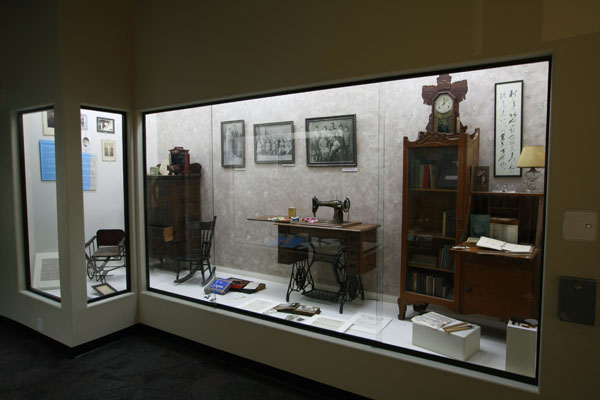Museum of Riverside

Reading the Walls Online Exhibit - Room #2 : Case 2
Haradas in Riverside

The Haradas now concentrated on raising their family and striving towards those other fundamental components of the American dream– a steady income, education, and professional careers for their children. In the predominately white Lemon Street neighborhood, the Haradas did have some concerns about the response of their neighbors.
The Harada family grew with the birth of Harold Shigetaka in 1923. In 1929, Jukichi adopted nine-year old Roy Hashimura whose parents had died. Jukichi and Ken Harada and their children were active and respected participants in the Riverside community. All the Harada children attended local schools and graduated from Riverside Polytechnic High School. Their proud parents kept schoolwork, yearbooks, and other memorabilia documenting their children’s accomplishments. Jukichi was president of the Japanese Association, created the Japanese calligraphy for headstone inscriptions at Olivewood Cemetery and served as a courtroom interpreter. He continued his quest for American citizenship when a new law was pending granting citizenship to alien war veterans.
The last time that all the Harada family members would be in Riverside was the occasion of Mine’s marriage to Saburo Kido in 1928. By 1941, the older children had moved away from Riverside. Only Sumi and Harold remained. Ken had suffered several strokes and Jukichi stayed home as her caregiver. Sumi became the primary operator of the "Washington Restaurant." Harold, still in his teens, assisted Sumi while he attended Junior College.


